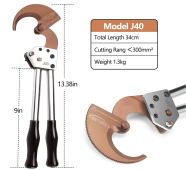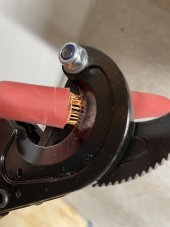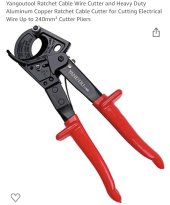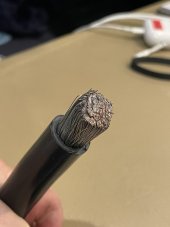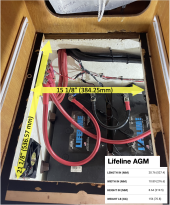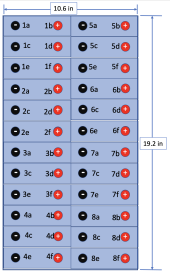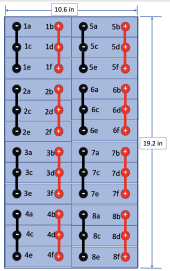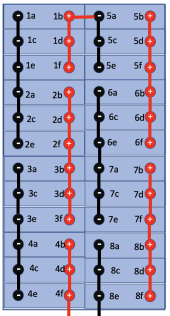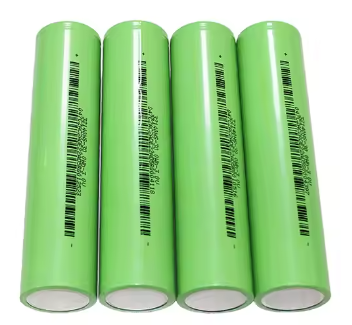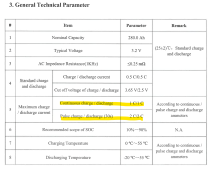Hint; use Scotch bright just to put a shine on the inside of the lugs. Just a few turns and blow out the dust just before you crimp. Use No-Ox-ID “A” special on electrical contacts but avoid the threads. Don’t use anything on the tinned cable strands, just clean fresh metal to metal. Everything I found on Amazon. Do not get the little ratcheting cable cutters, those work fine for the thicker strand cables like you find in utility wiring. Fine strands will cut amazingly easy with the long handle kind as seen in the picture. It’s actually fun. To cut the vinyl insulation, I used a modified tube cutter where the wheel was made to a knife edge. You may be better off asking around here for an alternative wire stripper unless you have access to a machine shop. If you are just cutting a few ends you can just use a sharp box cutter. With care you won’t nick strands or fingers. I use flat smooth bottom nuts with no serrations. If you have room left on the stud you can use a Bellevue washer too. I like these little eye terminals (Spoby) because mine were actually brass not copper as listed, they don’t distort with the washer pressure. I remove the red heat shrink to crimp. I use clear 1/8” adhesive lined and insert info inside. I found that only the small slot on my MC4 crimper with jaw turned close to the hinge could tightly crimp a doubled(folded) balance lead. If you are making short jumpers you must bend them slightly to a slightly smaller arc than what you need because the cable will spring out and rotate slightly (see how I over lapped the buss bar?) If you want finished lug hole spacing at 5.650”,you crimp at 5.550 to allow for relax distance. I used a 16 ton crimper and modified the “70”size die (for 2/0) and “120” (for 4/0) in the areas marked with an X. Remove a little at a time till your test crimp/W cable has a crisp cornered hex but little to no flash/extrusion. It can be done VERY carefully with a grinder but sneak up on it evenly. I did one that way in the middle of nowhere, the other I cheated with a milling machine. Good luck. 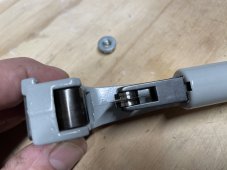
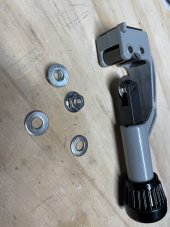
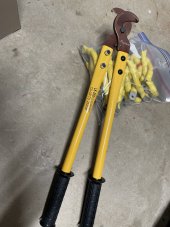







Last edited:



